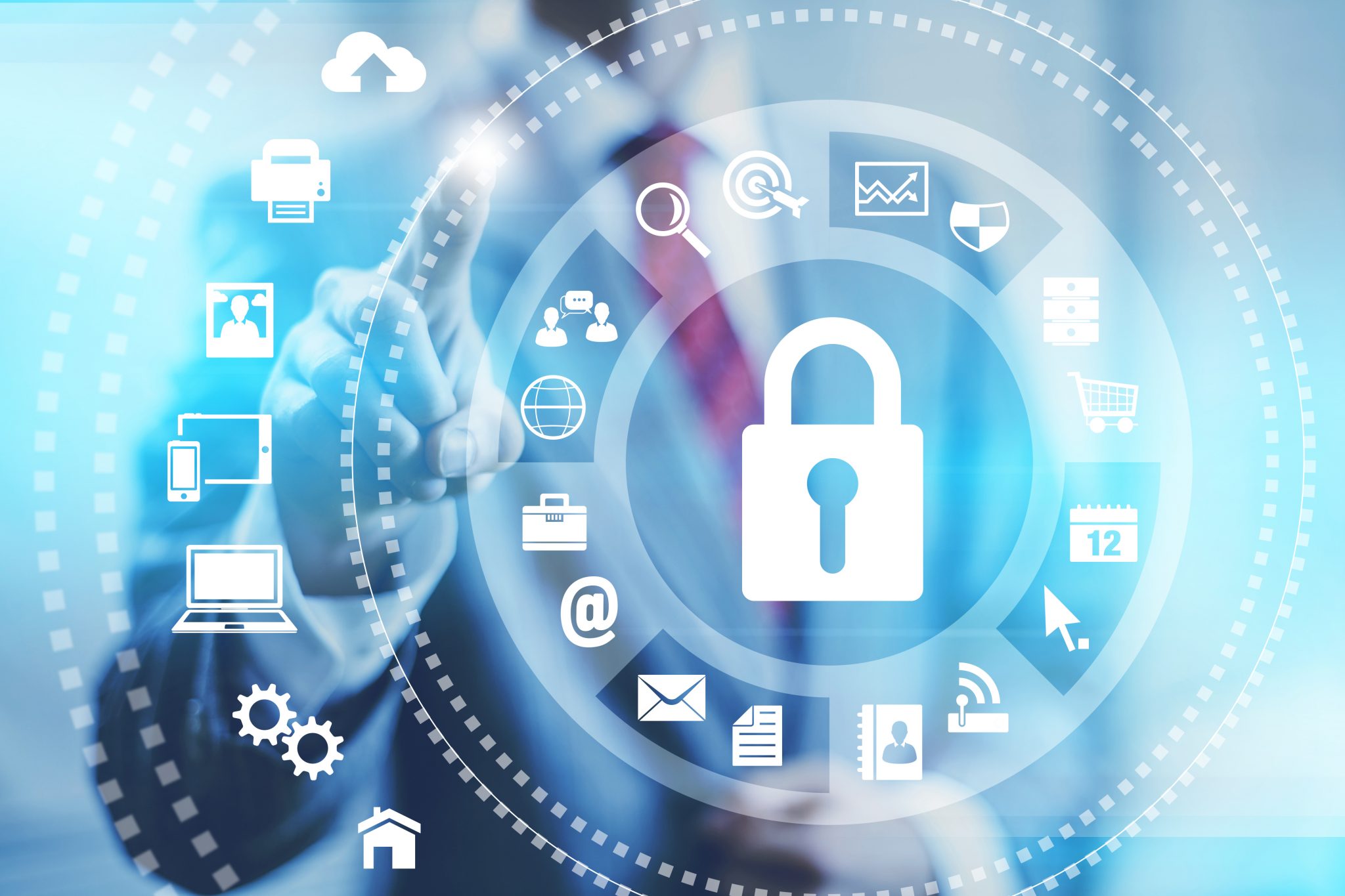Dreadful state of cybersecurity continues
Share
Banks, traders, and government companies are all in terrible hazard
Once again, the day’s subject (or at the least of the beyond weeks) is cybersecurity, and once again, the information is dreadful. The Petya ransomware assault most effectively continues the poor fashion.
Recent reports of surveys related to financial offerings, traders, and authorities agencies suggest endured onslaughts using cybercriminals, below-preparedness by using their objectives, and over-self-assurance through those same targets.
True, several of these reviews function as some symptoms of enhancements in preparedness via legitimate entities. But the improvement is the most effective marginal Time to wade in, mainly concerning banks and financial services.

The price tag to clear up an incident is fantastic.
A Kaspersky Lab document in the financial sector suggests that an average cybersecurity incident concerning a bank’s online banking offerings charges the company $1.75 million. The file indicates that 61% of cybersecurity incidents affecting online banking come with extra prices for the organization-centered. These include data loss, the lack of logo/organization reputation, leakage of personal facts, etc.
RELATED POSTS :
- Dangers of Mobile Phone to Students of Secondary School
- How to Go About Choosing Software for Your Small Business
- How To Take Care of Your Blog – And Your Bloggers
- Best Blogging Software for Easy Blog Management
- How Does the Internet Work? – A Simple Explanation of the Internet
“In the banking area, recognition is the whole lot, and protection goes hand-in-hand with this,” says Kirill Ilganaev, head of Kaspersky DDoS protection. “If a bank’s online offerings come underneath assault, it’s miles very tough for customers to consider that financial institution with their money, so it’s easy to see why an assault can be so crippling.”
State of the Protective Arts
Ovum polled pinnacle financial services security executives of huge corporations in North America, Europe, the Middle East, Africa, and Asia-Pacific. Some of the takeaways:
• Seventy-three% of respondents walk mormore than 25 cybersecurity tools, and 9% jog over one hundred.
• Of the respondents, 37% deal with more than 200,000 day-by-day protection indicators.
• Of the respondents, 47% said the handiest one in five signals is specific (i.e., a completely unique security event).
• Of the economic establishments surveyed, 67% consider they want higher, now not greater, security equipment.
• Cloud adoption will make managing cybersecurity even more laborious.
Ovum’s end: “Each new malware or attack fashion throws up a new project that could most effectively be addressed by deploying another new safety device. However, the ensuing complexity is a security threat, as safety operations center teams spend their Time patching holes, racing in opposition to Time to shut security gaps. Security silos additionally improve the ability of cybercriminals to find a vulnerable factor inside the infrastructure that they can use to infiltrate an agency.”
How financial institution enterprise clients fare
Now, organizations, retailers, and merchants, particularly stakeholders inside the payments chain, tie them to banks.
American Express points out in a survey of traders with e-commerce and bodily retail operations that eighty-one view online and cell income as the channel with the biggest boom opportunity. Yet, within the identical file, 37% of customers say they’ve deserted a web purchase because they did not feel their payment would be comfy.
Also, 73% of traders say their stage of fraudulent online income has elevated or remained the same over the last year.
“For merchants to capitalize on purchasers’ persisted shift to online and cell and mobile commerce, they need to provide their customers with the confidence that their facts are comfy,” says Mike Matan, vice-president of industry engagement, produce, and advertising, Global Network Business, American Express.
A Deloitte poll of four hundred protection officers in patron groups observed that 76% had been exceedingly confident in their capability to reply to a cyber incident. And yet:
• Eighty-two have no longer documented and examined cyber reaction plans regarding enterprise stakeholders beyond 12 months.
• Forty-six say their organization plays war games and chance simulations quarterly or semi-annually.
• 25% report loss of cyber funding.
• 21% lack clarity on cyber mandates, roles, and responsibilities.
“We found that just 30%-40% of corporations investing in structures which includes patron analytics, cloud integration, linked products, and cell bills have mature programs in the vicinity to address related dangers,” says Barb Renner, vice-chairman, Deloitte.
Juniper Research responded with the screaming headline: “Retailers to lose $seventy-one billion in card-not-gift fraud over the subsequent 5 years.”
Granted, this is global, but still.
Governments also affected
Then there’s the government. Perhaps most damning is a file from ACL, a danger management software program company based in Canada. Its 2017 Fraud Survey, wherein it surveyed more than 500 authorities, corporations, and private agencies inside the U.S. And Canada, carries this locating:
“Fraud in authorities groups is envisioned to fee taxpayers more than $136 billion every 12 months, and that’s simply from unsuitable bills,” says Dan Zitting, chief product officer at ACL. And this especially applies to U.S. Taxpayers. It cites a 2016 document via the Association of Certified Fraud Examiners.
More to ACL’s survey outcomes: Less than one 1/3 of government respondents stated that most fraud is detected. Also, government businesses completely act upon much less than 30% of anti-fraud guidelines.
“It is clear that the public zone remains quite vulnerable to fraud and that many businesses are neglecting to take the vital motion to fulfill the general public’s beliefs,” says Scott Robinson, director of public region, ACL.
In mid-June, CompTIA offered its annual Excellence in Cybersecurity Awards, which recognize individuals of Congress and federal business enterprise program managers who make strides in using national resources to enhance the cybersecurity abilities of people who paint for the U.S. Government. Recipients this 12 months had been Rep. Jim Langevin (D-R.I.), Sen. Mike Rounds (R-S.D.), and Lisa Dorr, director of IT Workforce Development in the Department of Health and Human Services.
Yet even as these were duly diagnosed, CompTIA announced the effects of a poll of government IT experts. These encompass:
• Eighty say cybersecurity consumers are more in their Time than just one to 2 years ago.
• 87% are expecting the cyber-danger landscape will simplest worsen.
• Seventy-six accept that the authorities must offer greater competitive salaries and bendy work preparations for its era people.
• 72% say the authorities should do more activity in identifying and selling professional pathways for civilian and navy officials” cyber specialists.
Bright spots on a bleak background
One advantage of this sad stew is the public-personal employer that 7,000 banks participate in—the Financial Services Information Sharing and Analysis Center. Following the May WannaCry ransomware assault, this company responded quickly with real-time facts and tools to fight and mitigate it. A current recap of that effort describes FS-ISAC as “a digital neighborhood watch of types.” (As of this writing, FS-ISAC has stated nothing about the recent Petya ransomware assault that is regarded in Europe, even though there is no question it’s far on its radar behind the scenes.)

There is the extra right information. Trustwave issued its 2017 Global Security Report. Some outcomes:
• The median number of days from an intrusion to detection of a compromise reduced to forty-nine days in 2016 from 80.5 days in 2015.
• The median range of days from detection to containment changed to 2.5 in 2016.
• However, the median number of days from an intrusion to the containment of a compromise stayed extraordinarily identical at sixty-two days in 2016, compared to 63 days in 2015.
As constantly, the large question is, what may be completed?
Gartner seeks to answer this with a prolonged laundry listing of the latest technology coming online for facts protection. They are really worth analyzing approximately inside the file cited below. These technologies include cloud workload safety structures, endpoint detection and response, community traffic evaluation, micro-segmentation, cloud admission to security agents, and more—11.
“Security and hazard leaders need to evaluate and interact with the new technologies to defend in opposition to superior assaults, higher permit virtual business transformation, and embrace new computing styles,” says Neil MacDonald, vice-president and Garner Fellow Emeritus.
On the horizon
But lower back to the Ovum examined, as stated above. Two of its main takeaways would possibly factor the way forward more genuinely:
• An open supply communications fabric that simplifies disparate security tools and enables the sharing of chance facts is critical.
• There has been a clear shift in the selection-making method for cybersecurity projects, with groups outside IT, including fraud, compliance, change control, operations, and line of enterprise, all taking part.
In other words, instead of just piling on solution after solution, discover ways to make them all work together—and make cybersecurity everybody’s activity and consist of everybody in the group.
Closing The Cybersecurity Gaps In Financial Services—A Global Survey By Ovum
2017 Trustwave Global Report Reveals Cybersecurity Trends
ACL Survey Finds Government Agencies Underperform On Fraud Detection & Reporting
CompTIA Presents 2017 Excellence In Cybersecurity Awards As New Survey Finds eighty-three% Of IT Professionals Spending More Time On Cyber Than Just Two Years Ago.
Cyber threats To Online Banking Services Cost Banks Nearly $1.8 Million
Deloitte Study: Consumer Businesses Operate With A False Sense Of Security About Cyber Risk
FS-ISAC Tips To Defend Against Ransomware
Gartner Identified The Top Technologies For Security In 2017
Merchants Missing Out On Online Sales As Digital Security Concerns Influence Consumer Purchasing Behavior
Retailers To Lose $seventy-one Billion In Card-Not-Present Fraud Over The Next 5 Years





